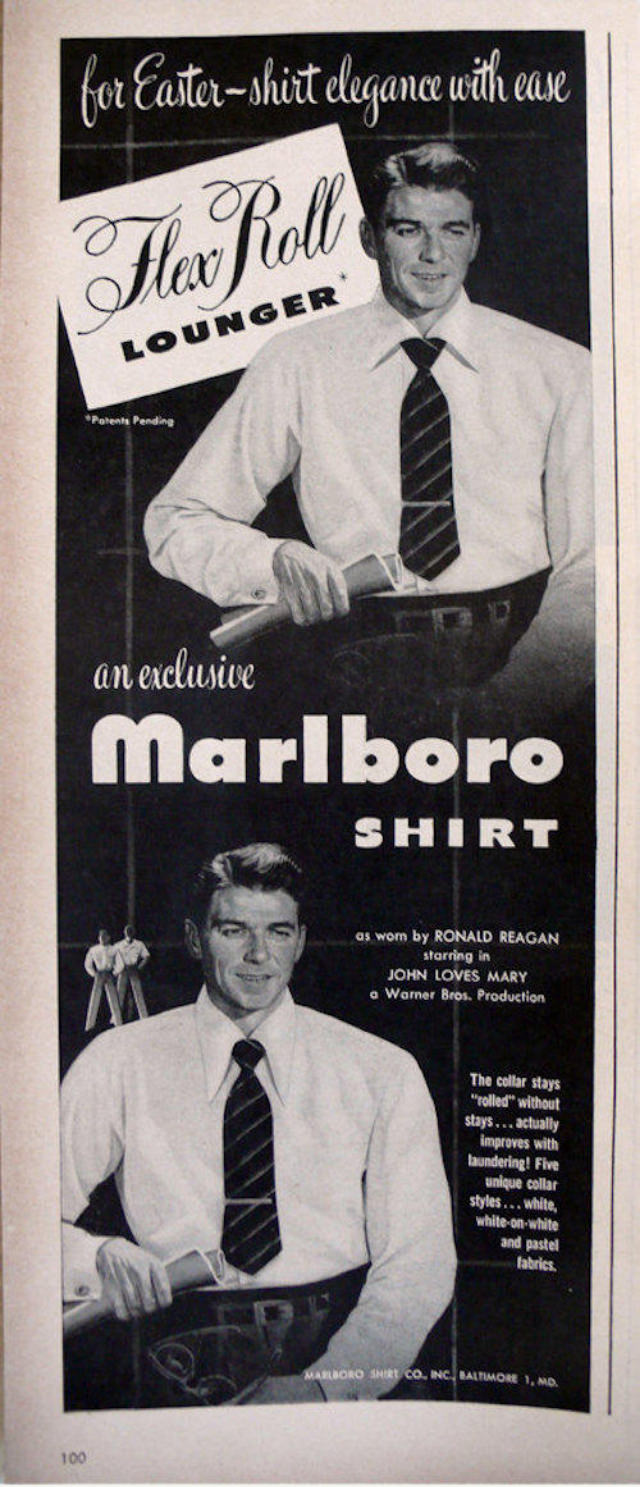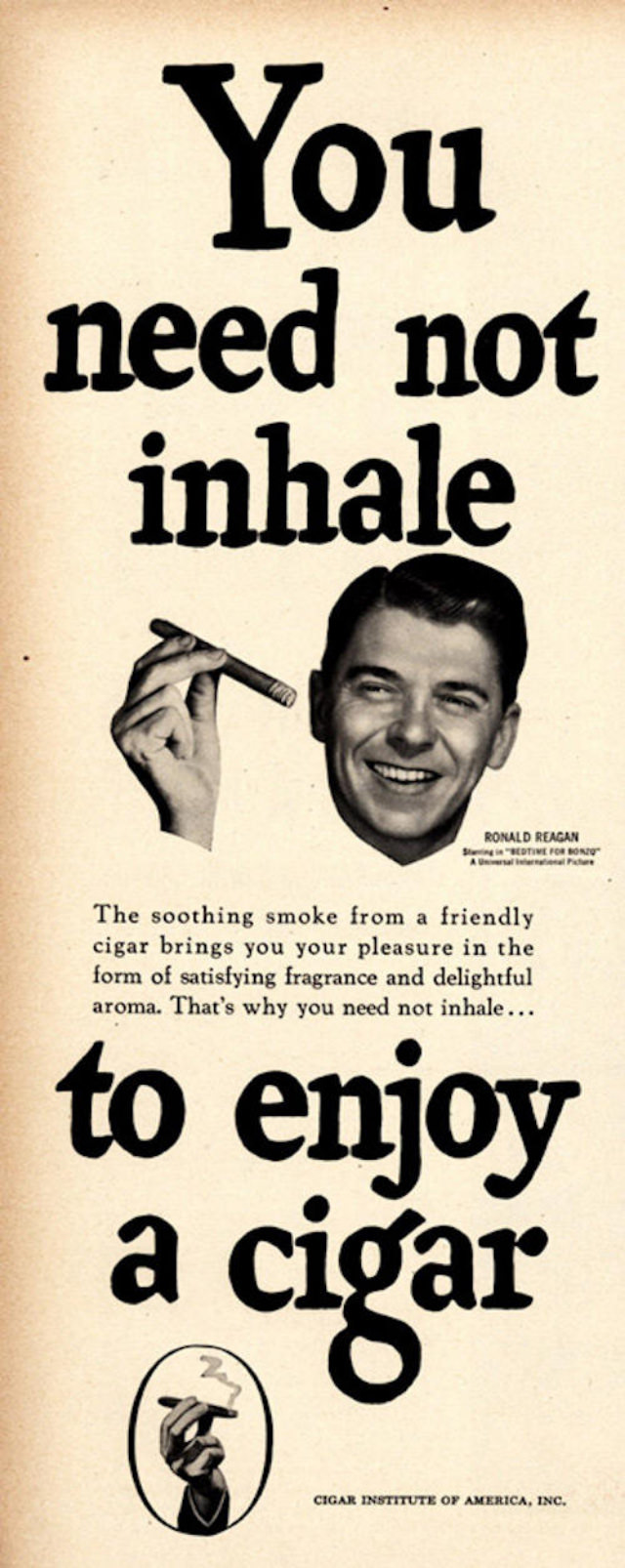Before the bright lights of the White House called him, Ronald Reagan was already a star, dazzling audiences not only on the big screen but also in the glitzy and persuasive world of vintage advertising. Long before becoming the 40th President of the United States, Reagan was a Master of Media, gracing print ads and commercials with his charismatic presence. His journey through the advertising world is a fascinating tale, offering glimpses into the persona that would eventually lead America through the 1980s.
From Screen to Ads
Reagan began his career in the entertainment industry, where his easy-going charisma and warm demeanor made him a popular figure. This presence made a seamless transition into the world of advertising, where Reagan became a popular figure for a variety of products. His image was approachable and trustworthy – qualities that advertisers saw as a perfect fit for their products.
Reagan’s foray into advertising was a mutually beneficial arrangement. Advertisers benefited from his fame and likeable image, while Reagan himself gained invaluable experience in front of the camera, understanding how to captivate an audience – skills that would serve him well in his political career.
The Master Communicator
Reagan’s success in advertising hinged on his ability to connect with the audience. He was a master communicator, able to deliver a brand’s message with sincerity and conviction. This talent wasn’t limited to the acting roles he took on; it was an inherent part of his personality, a factor that played a significant role in his later political success.
This persuasive ability didn’t go unnoticed. Reagan’s ability to sell a product with authenticity was a testament to his ability to understand and communicate with the everyday person. This quality resonated with viewers and made his endorsements highly effective.
The Journey to the White House
In retrospect, Reagan’s stint in the advertising world can be seen as a stepping stone to his ultimate role as the leader of the free world. The charisma that endeared him to the audiences and the persuasive skills he honed while endorsing products played a crucial part in his political ascent.
His talent for communication didn’t wane during his presidency; it became even more pronounced. He was dubbed “The Great Communicator,” a testament to his unrivaled ability to articulate his vision and connect with people, skills that were honed during his time in the advertising industry.
#1 Van Heusen Ad, 1953
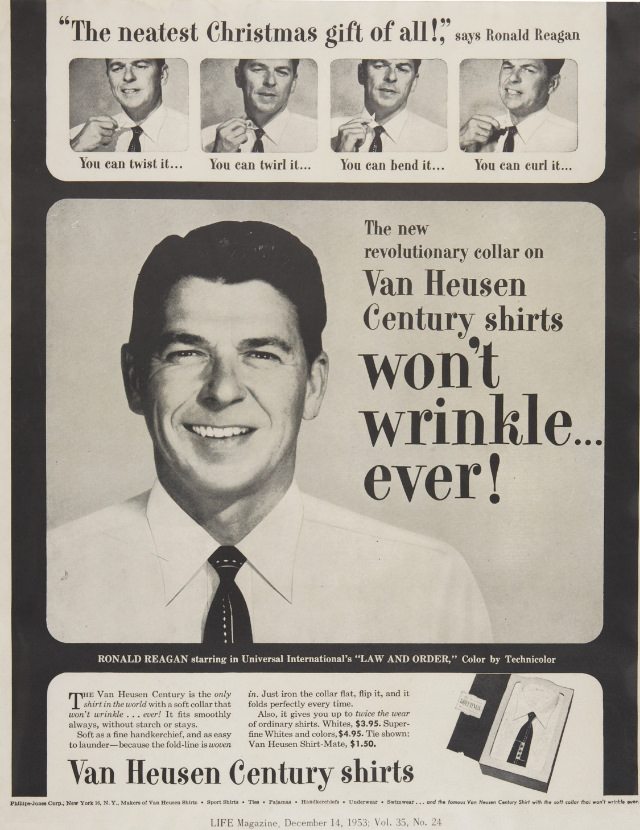
Reagan appeared in this Van Heusen campaign in 1953, and in January 1981, the company re-ran the ad with a celebratory message in Time, Newsweek, and People magazines to congratulate Reagan on the eve of his first inauguration. Then, in 1985, Andy Warhol used this same ad as a basis for his screenprint “Van Heusen (Ronald Reagan)” in his “Ads” series.
#2 GE Portable Television Ad, 1961
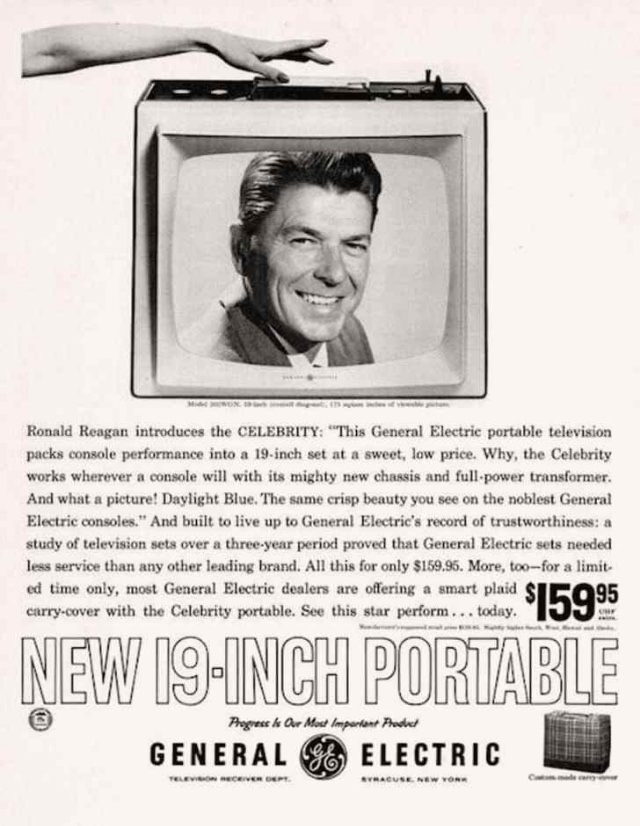
This advertisement appeared in 1961 when Reagan was still presenting General Electric Theater, which he hosted the show until the following year. With Reagan at the helm, GE Theater had become a top-10 show in the Nielsen ratings between 1956-58, and celebrities like Fred Astaire, Bette Davis, Judy Garland, and the Marx Brothers all made guest-star appearances.
#3 Chesterfield Christmas Ad, 1951
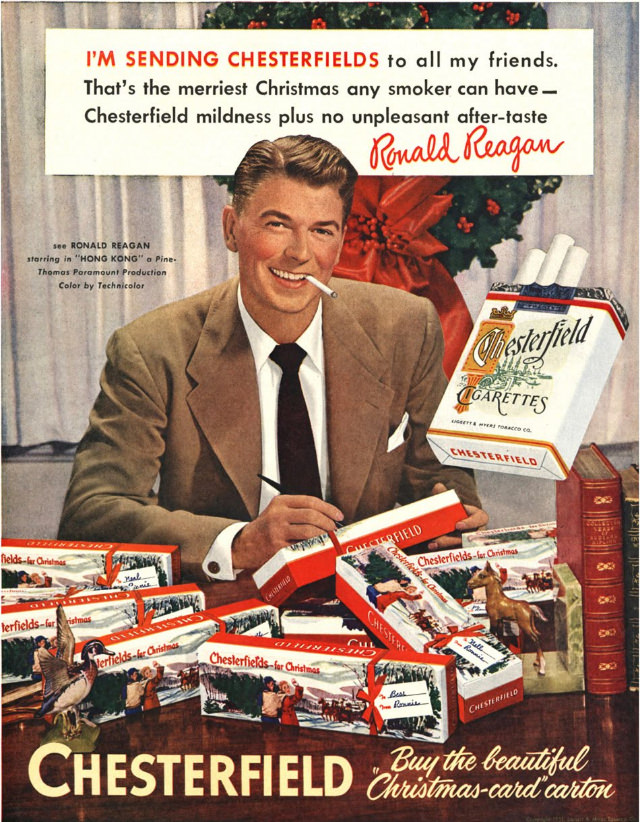
This ad was featured in the December 3, 1951 issue of LIFE magazine. In 1947, Chesterfield had changed their marketing strategy to heavily emphasize celebrity endorsements, and by this time, famous spokespeople for the brand had included Lucille Ball, Joan Crawford, Betty Grable, Rita Hayworth, Barbara Stanwyck, Gary Cooper, Bing Crosby, Kirk Douglas, Bob Hope, Gregory Peck, Frank Sinatra, and Jimmy Stewart.
#4 Chesterfield Ad, 1948
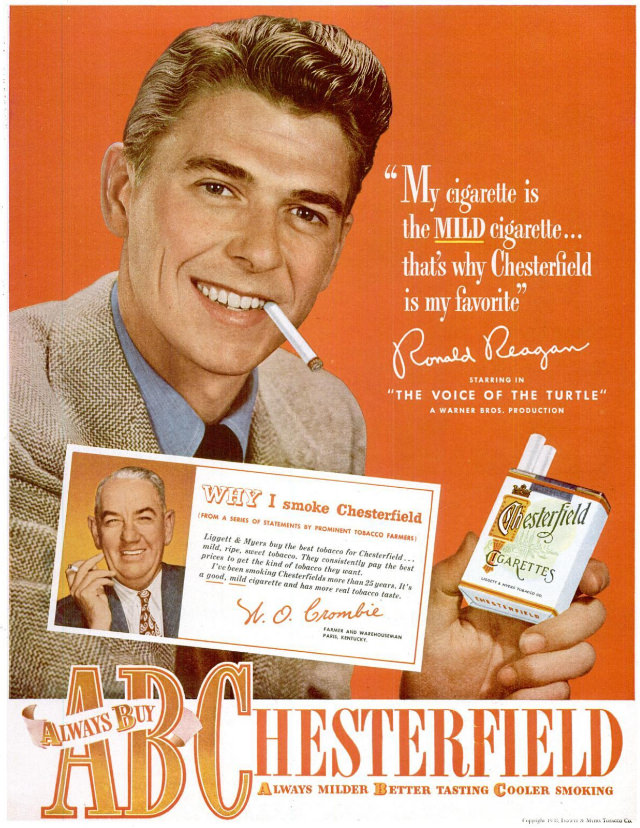
Despite appearing in multiple Chesterfield advertisements—like this one from 1948—Reagan did not smoke cigarettes. He did smoke a pipe, writing in his autobiography, An American Life, that he took up the habit in college because he thought it looked cool: “I’d never liked cigarettes, but I was impressed by a flurry of ads in those days in which women said, ‘I like a man who smokes a pipe.’ I’d always liked the look of someone smoking a pipe, so I saved up and bought one. But I never inhaled. I just sucked in the smoke, tasted it, and blew it out—and I only did that during the offseason, when I wasn’t playing football.”
After his brother, Neil, a two- or three-packs-a-day cigarette smoker, developed laryngeal cancer in the 1960s, Reagan quit smoking his pipe and picked up a Jelly Belly habit instead.
#5 Marlboro Shirt Company Christmas Ad, 1947
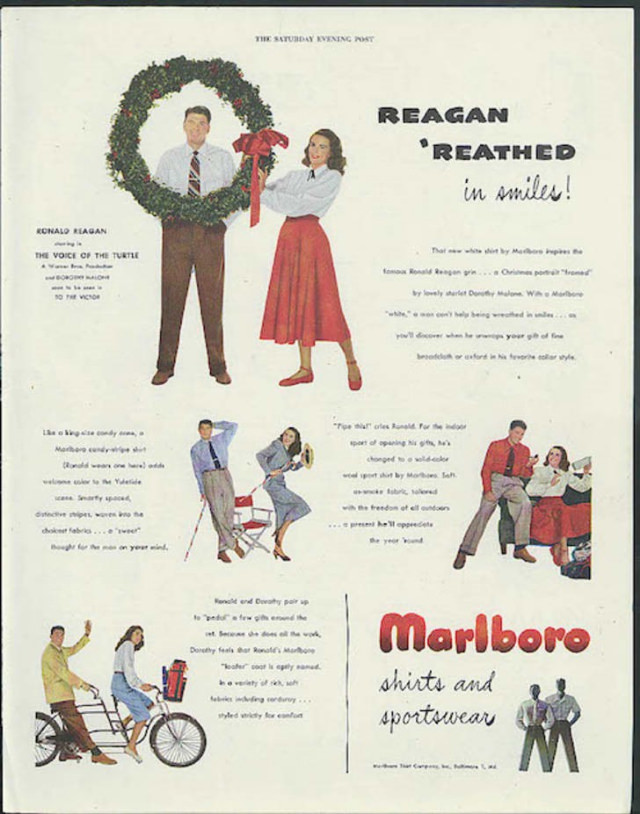
“‘Pipe this!’ cries Ronald.” Apparently, Marlboro shirts feature “Soft-as-smoke fabric,” but don’t get confused: the Marlboro Shirt Company was unrelated to the Marlboro cigarette brand, which has been produced by Philip Morris since 1924. Founded in Baltimore in 1907, the clothing company still exists and now goes by the name Marlboro Originals. The above holiday ad appeared in the December 13, 1947 issue of the Saturday Evening Post and in the January 1948 issue of Esquire.
#6 Union Pacific Domeliner Ad, 1959
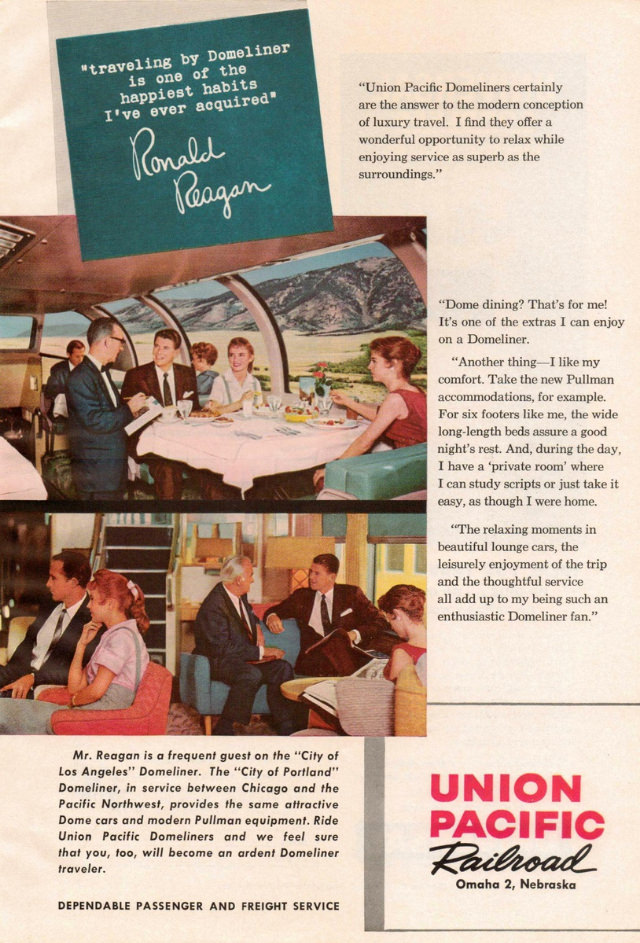
In this advertisement in National Geographic from 1959, Reagan touts the luxury of train travel in a Union Pacific Domeliner, a special passenger car topped with a glass dome that offered panoramic views. The Domeliner had snagged another A-list endorsement a couple of years earlier—it got the full-episode treatment on I Love Lucy when Lucy, Desi, and company took a long trip on the luxury liner (which Lucy ruined when she kept pulling the emergency brake).
#7 Jeris Ad, 1951
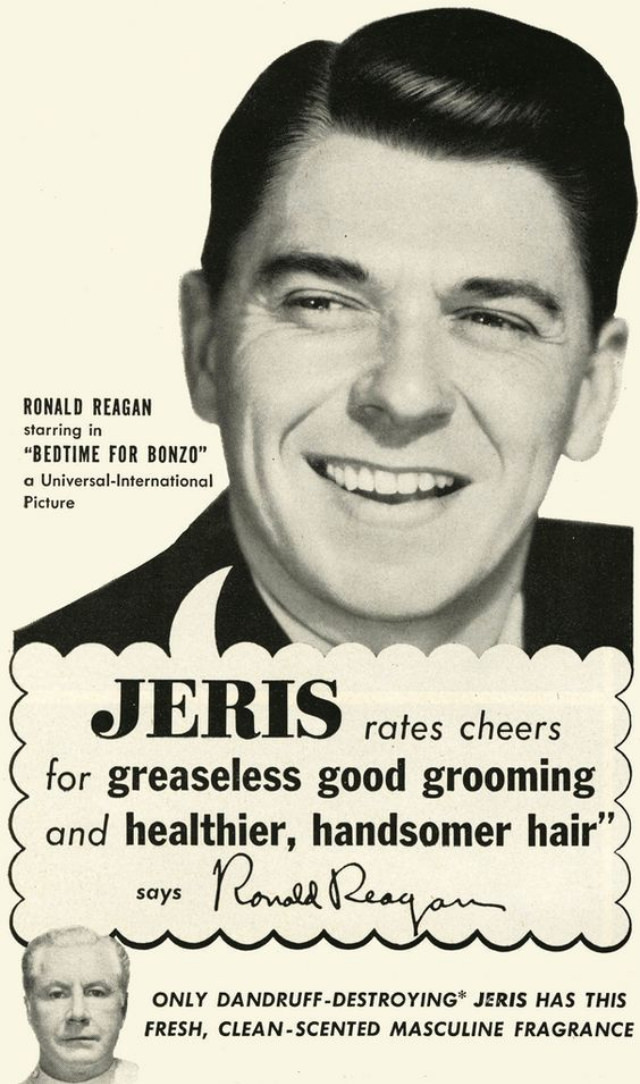
This advertisement appeared in the February 5, 1951 issue of LIFE magazine, among other places. Hair tonics—lightweight, alcohol-based hair products—were popular in the 1950s and still show up in barbershops today. Men used tonics to get a crisp part and to add shine to the hair without making it greasy. And Reagan wasn’t the only celebrity singing Jeris’s praises—Kirk Douglas also endorsed the brand.
#8 Marlboro Shirt Company Ad, 1949
#9 Cigar Institute of America Ad, 1951
#10 Royal Crown Cola Ad With Jane Wyman, 1947
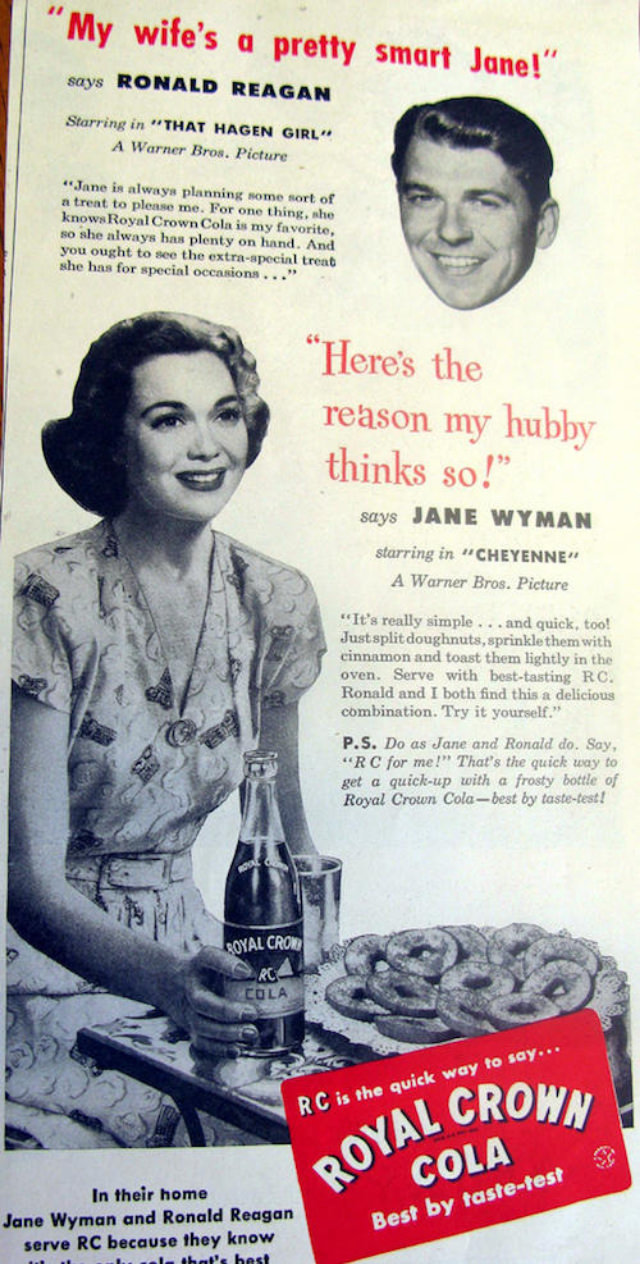
Reagan and his first wife, actress Jane Wyman appeared in a few ads together, such as a 1941 Chesterfield cigarettes ad and the above Royal Crown Cola ad in 1947. The two met on the set of the film Brother Rat in 1938 and kindled a romance during a nine-week “Stars of Tomorrow” performance tour the next year. They married in January 1940 and starred in four movies together that year, becoming fixtures in the gossip pages of movie magazines like Modern Screen and Photoplay. Reagan and Wyman separated in 1948, divorcing in 1949, and Reagan married Nancy Davis, the future First Lady, in 1952.
#11 “Live Better Electrically” Ad, 1958
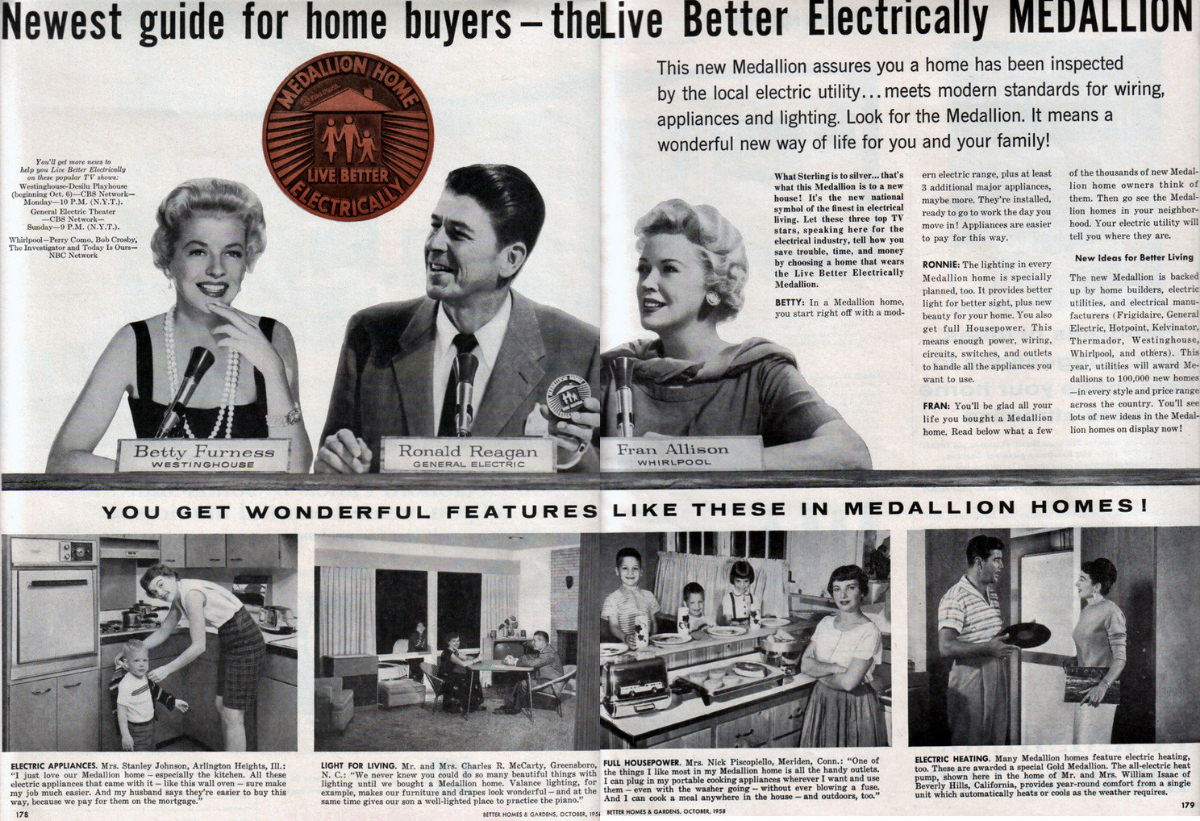
In 1954, Reagan was hired by General Electric to host General Electric Theater, a popular CBS anthology TV show that mixed dramatic stories with advertising for GE products and the modern “electric home” more generally. It ran for two seasons without a host, then introduced Reagan in the third season to give the show a more consistent voice. At a low point in his acting career, Reagan was enticed by the offer of steady work—and a starting paycheck of $125,000.


